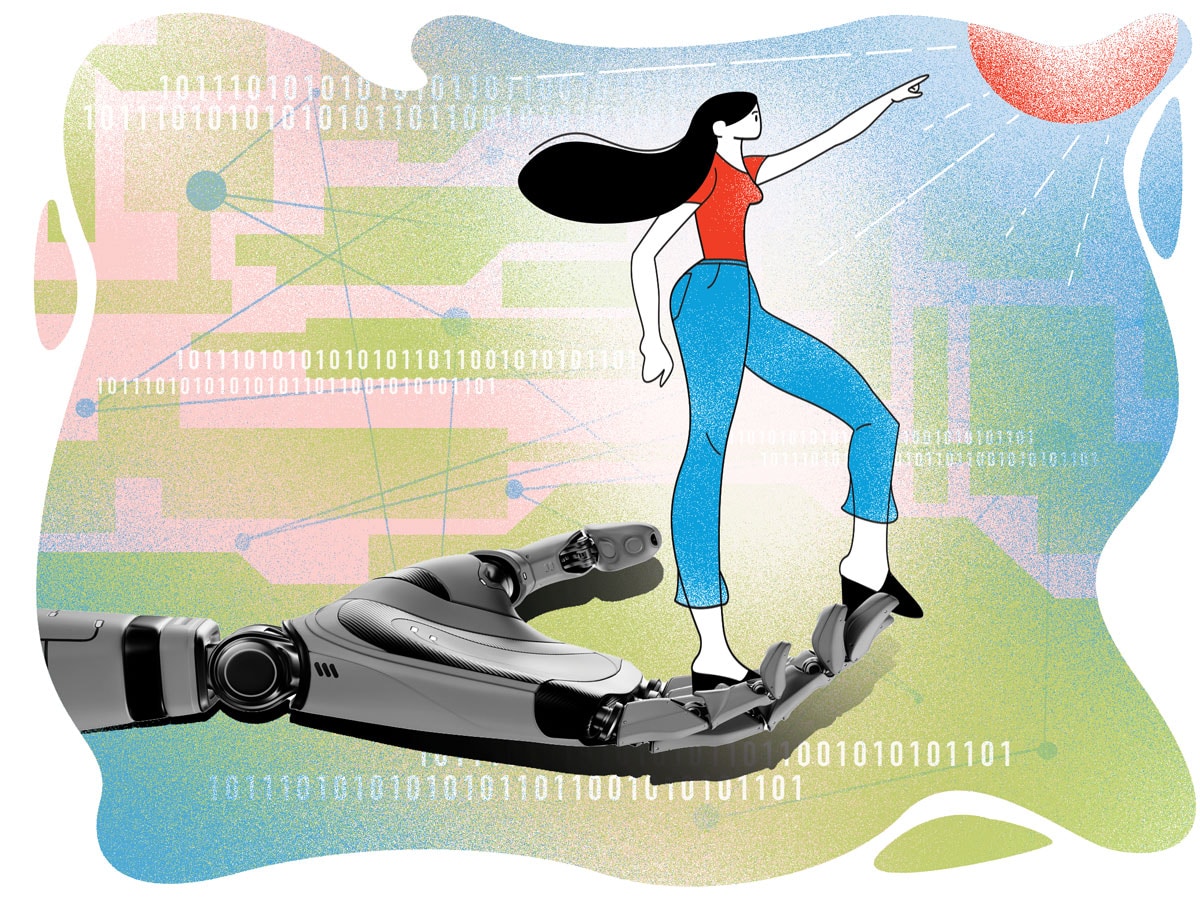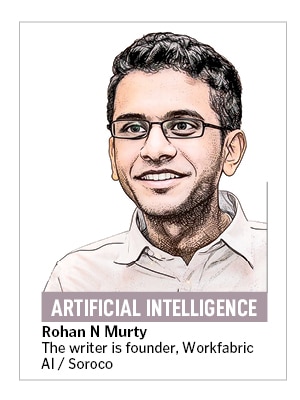
AI isn't just an assistant; it's your teammate: Rohan Murthy
An AI co-worker absorbs processes, protocols and data from the repeated actions of the team, and presents insights and solutions much faster than its human counterparts, the founder of Workfabric AI / Soroco writes
 When you embed an AI co-worker into the pyramid of people, the shape of that pyramid begins to shift, flattening hierarchy and decentralising control.
Illustration: Chaitanya Dinesh Surpur ; Image: Shutterstock
When you embed an AI co-worker into the pyramid of people, the shape of that pyramid begins to shift, flattening hierarchy and decentralising control.
Illustration: Chaitanya Dinesh Surpur ; Image: Shutterstock

Teams and AI (artificial intelligence) are made for each other because they suffer opposite weaknesses, and perfectly cancel them out. A modern language model can summon every fact ever posted online but knows nothing about the narrow, living reality inside one logistics unit, oncology ward or product-design pod. A team, on the other hand, has deep contextual instincts—tribal shortcuts, scar-tissue from past launches, a nose for risk—but its memory is fragile, scattered across inboxes and hallway lore. Marry the two and you get the best of both: An endlessly patient learner that internalises the team’s hard-won nuance and recalls it when needed at machine speed.
That’s the promise of a new kind of teammate: Not a personal co-pilot, but a shared AI co-worker. This is software that doesn’t just help one person go faster; it learns how an entire team works, remembers their working patterns, and participates in the flow of work like any team member would.
Hence AI, of this kind, reconfigures the fabric of the team itself. When you embed an AI co-worker into the pyramid of people, the shape of that pyramid begins to shift, flattening hierarchy and decentralising control.
Enterprises need that synthesis more than any app built for solo productivity. Why? Because every strategic metric that matters—time-to-market, customer churn, regulatory exposure—crosses multiple functions by design. One glitch in the chain erases 10 perfect individual performances. An embedded AI co-worker bridges those gaps: It reminds the marketing team of a recently updated privacy clause before the campaign ships; it nudges the engineering team to reuse code a sister squad already battle-tested; it hands the new hire last quarter’s decision log so she can contribute on day three rather than month three.



















